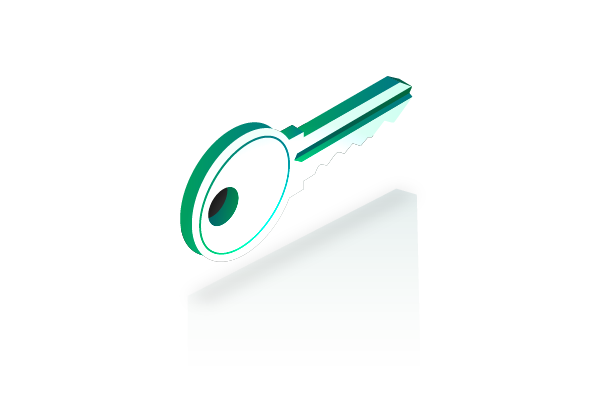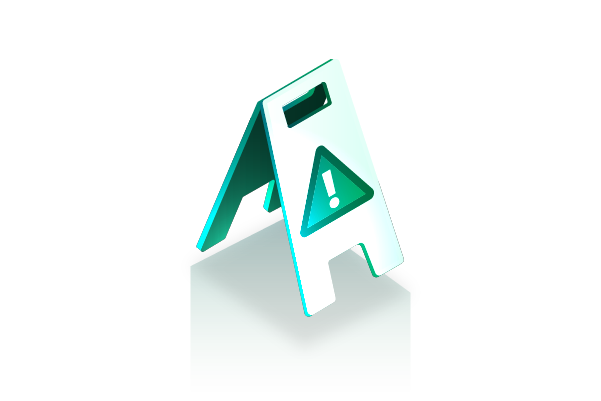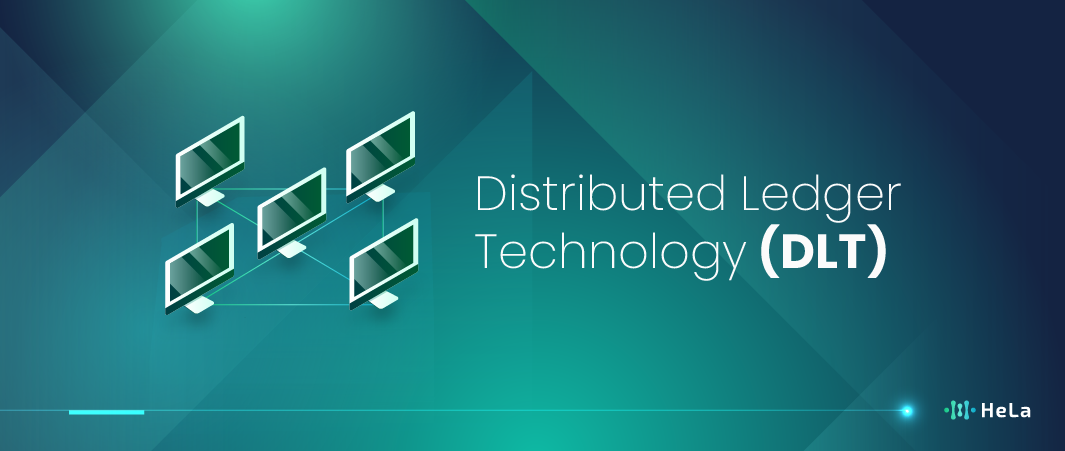In a world where digital innovation is constantly reshaping how we conduct transactions, secure data, and trust information, Distributed Ledger Technology (DLT) emerges as a beacon of potential. At its core, DLT is a digital system for recording the transaction of assets in which the transactions and their details are recorded in multiple places at the same time. Unlike traditional databases, DLT has no central data store or administration functionality. This decentralization is what makes it both unique and valuable, offering a new paradigm for security and transparency in digital transactions.
DLT is not just a technical term reserved for the experts; it has implications and applications that touch upon various sectors of the economy and aspects of our daily lives. From banking and finance to supply chain management and beyond, the technology is paving the way for a more secure, efficient, and transparent way of conducting business and managing data. Understanding DLT means unlocking a door to the future of technology, where trust is built into the system, and efficiency is not just a goal but a reality.
As we delve deeper into the realm of DLT, it’s important to keep in mind the human element. This technology, while complex, is designed to make our systems more reliable and our lives easier. Its development and application are driven by the need to improve the way we interact with digital systems and each other. By exploring DLT in simple terms, we aim to demystify its workings and highlight its potential benefits for society as a whole.
Understanding Distributed Ledger Technology (DLT)
Distributed Ledger Technology (DLT) signifies a significant evolution in the methodology of recording and disseminating information. Unlike traditional centralized systems, where a single entity controls the database, DLT decentralizes the storage mechanism, distributing the data across numerous nodes or participants within a network. This decentralized approach is fundamental to DLT’s design, offering a new way to think about trust and security in digital transactions.
In a DLT system, each node or participant maintains an identical copy of the ledger, ensuring that all records are replicated across the network. Whenever a transaction occurs, it is verified by the network through a consensus mechanism before being simultaneously recorded on all ledgers. This method not only mitigates the risk associated with central points of failure but also promotes transparency and trust among participants. Everyone in the network has access to the same transaction history, making it nearly impossible to alter records without consensus, thereby ensuring data integrity.
Also Read: 7 Best USDT Wallet to Consider in 2024
The security benefits of DLT stem from its inherent structure. With multiple copies of the data ledger maintained across different nodes, the system becomes highly resistant to cyber attacks, fraud, and unauthorized alterations. This is because any attempt to alter the information on one ledger would require simultaneous changes on all copies in the network, a task that is computationally impractical and easily detectable by other participants.
Moreover, DLT facilitates transparency and auditability. Since every participant has access to the entire transaction history, it becomes easier to audit transactions and verify the integrity of the data without relying on a central authority. This aspect is particularly beneficial in sectors like finance, supply chain management, and public services, where transparency and trust are paramount.
The adoption of DLT is not without challenges, however. Scalability, energy consumption (particularly in proof-of-work consensus mechanisms), and the integration with existing legal and regulatory frameworks are significant hurdles that need to be addressed. Despite these challenges, the potential benefits of DLT in terms of security, efficiency, and trust make it a compelling technology for a wide range of applications.
The Mechanics of DLT: How It Works
Distributed Ledger Technology (DLT) operates on a framework that allows multiple participants, known as nodes, to access, verify, and record transactions in a decentralized manner, without the need for a central authority or intermediary. This innovative approach to record-keeping and transaction management is what underpins technologies like blockchain, which is most famously utilized by cryptocurrencies such as Bitcoin.
The essence of DLT lies in its consensus mechanism, a vital process that enables all participants in the network to agree on the legitimacy of transactions. This agreement is crucial because it ensures that every transaction added to the ledger is accurate, authorized, and can be trusted. The consensus mechanism varies across different types of DLTs, including Proof of Work (PoW), Proof of Stake (PoS), and others, each with its own method for validating transactions and achieving consensus among participants.
Once a transaction has been verified and agreed upon through the consensus mechanism, it is time stamped and appended to the ledger. This addition is not just a simple entry; it involves linking the new transaction to the previous one in a chronological order, creating a chain of transactions. This chained structure is foundational to the security and integrity of DLTs because it ensures that any attempt to alter a transaction record would necessitate modifications across all subsequent records and across all copies of the ledger held by participants.
Given the distributed nature of the ledger, where copies exist on multiple nodes across the network, executing such a change is impractically difficult, if not impossible, without being detected. This inherent resistance to modification is what makes DLTs exceptionally secure and trustworthy for transaction recording and asset management.
Furthermore, DLTs can operate transparently, with transactions being visible to all participants (though the parties involved in the transactions can remain anonymous), enhancing the transparency of the system while maintaining privacy where necessary. This balance of transparency and privacy, alongside the robust security measures, positions DLT as a transformative technology for various applications beyond cryptocurrencies, including supply chain management, voting systems, identity verification, and more, where integrity, security, and transparency are paramount.
Key Features and Advantages of DLT

Distributed Ledger Technology (DLT) represents a paradigm shift in how data is stored, shared, and verified across different parties without the need for a central authority. This technology has several key features and advantages that make it a revolutionary tool for various industries. Here’s a more detailed context:
Decentralization
At its core, DLT operates on a decentralized network, where each participant, or node, holds a copy of the ledger. This means that no single entity has control over the entire ledger, which significantly reduces the risk of central points of failure and attacks that are common in centralized systems. Decentralization not only enhances security but also promotes a more democratic and equitable distribution of power among its users.
Transparency and Auditability
One of the most significant advantages of DLT is its transparency. Every transaction that occurs on the ledger is visible to all participants who have permission to view it. This level of openness ensures that activities are conducted transparently, making it easier to audit and verify transactions. Such transparency builds trust among participants, as they can independently verify the transactions without having to rely on a third party.
Immutability
Once a transaction is recorded on a distributed ledger, it cannot be altered or deleted. This immutability is ensured through the use of cryptographic hashes and consensus mechanisms, which validate and permanently record transactions. This feature is crucial for applications requiring a high degree of integrity and trust, as it guarantees that the history of transactions is secure and unchanged over time.
Security
DLT’s decentralized nature and cryptographic security measures make it highly resistant to tampering and fraud. By distributing copies of the ledger across a network, it ensures that no single point of failure can compromise the integrity of the entire system. Furthermore, to alter any information on the ledger, an attacker would need to gain control of a majority of the nodes simultaneously, a feat that is extremely difficult and costly to achieve in a well-distributed network.
Efficiency and Speed
DLT can streamline processes and reduce the time it takes to complete transactions by removing intermediaries and automating various processes through smart contracts. Smart contracts are self-executing contracts with the terms of the agreement directly written into code. They automatically enforce and execute the terms of a contract when predetermined conditions are met, reducing the need for manual processing and the potential for errors.
Cost Reduction
By eliminating the need for middlemen and reducing the reliance on traditional banking and payment systems, DLT can significantly lower transaction costs. This is particularly beneficial for international transactions, which often involve high fees and long processing times.
Cross-Industry Applications
Beyond financial services, DLT has potential applications across a wide range of industries, including supply chain management, healthcare, government, and more. For example, in supply chain management, DLT can provide a transparent and unalterable record of the movement of goods, from production to delivery, enhancing traceability and accountability.
The decentralized, transparent, immutable, and secure nature of DLT, combined with its potential to increase efficiency, reduce costs, and find applications in various fields, positions it as a transformative technology that could reshape many aspects of the global economy and society.
Practical Applications of DLT Across Industries

The practical applications of Distributed Ledger Technology (DLT) are vast and diverse, touching upon various sectors beyond its initial association with cryptocurrencies like Bitcoin. Here’s a broader look at how DLT is revolutionizing different industries:
- Finance and Banking: Beyond cryptocurrencies, DLT is a game-changer for financial transactions and banking operations. It offers a secure, efficient, and cost-effective way to process payments and settlements. By enabling real-time transactions without the need for intermediaries, DLT can significantly reduce transaction costs and eliminate delays associated with traditional banking. Moreover, it enhances security and transparency, making it easier to combat fraud and ensure compliance with financial regulations.
- Supply Chain Management: In the supply chain sector, DLT provides an unalterable record of transactions, ensuring a transparent and efficient tracking of goods from their origin to the consumer. This capability improves the traceability of products, reduces losses from counterfeit and gray market, enhances recall management, and ensures the authenticity of goods. By facilitating a more streamlined supply chain process, DLT can help companies reduce operational costs and increase consumer trust.
- Governments and Public Services: For public services, DLT offers a robust solution for secure and transparent record-keeping. This includes applications in land registration, where it can help prevent fraud and reduce processing times for property transactions. In voting systems, DLT can enhance the integrity and transparency of elections, making it harder to tamper with votes and easier to verify results. Furthermore, DLT can streamline various other governmental processes, such as the issuance of official documents and the management of public records, improving efficiency and public trust in government operations.
- Healthcare: In healthcare, DLT can secure patient data while ensuring it is easily shareable among authorized professionals, improving the accuracy of diagnoses and the effectiveness of treatments. It also has the potential to streamline the management of pharmaceutical supply chains, ensuring the authenticity of drugs and reducing the incidence of counterfeit medications.
- Energy Sector: DLT can revolutionize the energy sector by enabling more efficient, transparent, and secure transactions within energy trading, particularly in the context of renewable energy. It allows for the creation of decentralized energy grids where consumers can buy and sell energy directly, improving energy distribution efficiency and promoting the use of renewable sources.
- Education: By securing academic credentials on a blockchain, DLT can combat the falsification of educational qualifications and simplify the verification process for employers and educational institutions, making the system more transparent and trustworthy.
- Real Estate: DLT can simplify property transactions, reducing the need for paper-based record keeping and making the buying, selling, and renting of properties more efficient and transparent.
- Entertainment and Media: In the entertainment industry, DLT can be used to manage intellectual property rights and royalties more efficiently, ensuring artists and creators are fairly compensated for their work.
By harnessing the power of DLT, these industries can achieve greater efficiency, transparency, and security in their operations, transforming traditional practices and paving the way for innovative business models.
Challenges and Considerations in Implementing DLT

The implementation of Distributed Ledger Technology (DLT) presents a range of challenges and considerations that need to be addressed for its successful adoption. While DLT offers numerous benefits such as increased security, transparency, and efficiency, its integration into existing systems and practices poses significant hurdles:
Scalability
One of the primary challenges associated with DLT is its ability to scale effectively. As the network grows in size and complexity, ensuring that transactions can be processed quickly and efficiently becomes more difficult. This issue is particularly pronounced in blockchain-based systems, where the consensus mechanisms required to validate transactions can become a bottleneck, leading to slower transaction times and increased costs.
Energy Consumption
Many DLT systems, especially those utilizing Proof of Work (PoW) as a consensus mechanism, are criticized for their high energy consumption. The mining process in PoW involves solving complex mathematical puzzles, which requires substantial computational power and, by extension, a significant amount of electricity. This has raised environmental concerns and calls for more sustainable alternatives.
Regulatory Compliance
Navigating the regulatory landscape is another significant challenge for DLT adoption. The decentralized and often borderless nature of DLT systems can complicate compliance with local and international regulations, including those related to financial transactions, data privacy, and anti-money laundering (AML) standards. Businesses and institutions must ensure that their DLT implementations are compliant with all relevant laws and regulations, which can vary widely across jurisdictions.
Change in Mindset and Operational Frameworks
Adopting DLT requires a fundamental shift in how businesses and institutions operate. Moving from a centralized to a decentralized model involves rethinking organizational structures, governance models, and operational processes. This transition can be particularly challenging for entities that are deeply entrenched in traditional, centralized systems. It requires not only technological change but also cultural and mindset shifts across the organization.
Also Read: What Is ERC-404? Understanding the New Standard
Interoperability and Standardization
Ensuring that different DLT systems can work together seamlessly is crucial for widespread adoption. However, the lack of interoperability and standardized protocols can hinder the ability of different systems to communicate and exchange information. This can create silos and limit the potential network effects that are critical for the success of DLT.
Addressing these challenges requires a concerted effort from technology developers, businesses, regulatory bodies, and other stakeholders. Innovations in technology, such as the development of more energy-efficient consensus mechanisms and the establishment of interoperability standards, along with a proactive approach to regulatory compliance and organizational change management, are essential for overcoming the hurdles associated with DLT adoption.
Conclusion
Distributed Ledger Technology (DLT) stands at the forefront of the next wave of digital transformation, offering a new approach to data management and transaction processing that is secure, transparent, and decentralized. Its implications for industries across the board are profound, promising to redefine how we think about trust, security, and efficiency in the digital age. As we continue to explore and expand the applications of DLT, the technology is set to become a cornerstone of digital innovation, reshaping our economic, social, and political landscapes in the process.
Understanding and adopting DLT requires a departure from traditional models of data management and a move towards a more collaborative, transparent approach. While challenges remain in terms of scalability, energy consumption, and regulation, the ongoing developments in the field promise to address these issues, paving the way for broader adoption.
In conclusion, DLT offers more than just a technical solution; it presents a vision of a future where digital transactions and data management are built on the foundations of trust and transparency. As we embrace this technology, we open up new possibilities for efficiency, security, and integrity in our digital interactions. The journey of understanding and integrating DLT into our systems is just beginning, and its potential impact is vast and exciting. The exploration of DLT is not just about technology; it’s about envisioning a new way of conducting business and managing data in an increasingly digital world.
Disclaimer: The information provided by HeLa Labs in this article is intended for general informational purposes and does not reflect the company’s opinion. It is not intended as investment advice or recommendations. Readers are strongly advised to conduct their own thorough research and consult with a qualified financial advisor before making any financial decisions.

Joshua Soriano
I am a writer specializing in decentralized systems, digital assets, and Web3 innovation. I develop research-driven explainers, case studies, and thought leadership that connect blockchain infrastructure, smart contract design, and tokenization models to real-world outcomes.
My work focuses on translating complex technical concepts into clear, actionable narratives for builders, businesses, and investors, highlighting transparency, security, and operational efficiency. Each piece blends primary-source research, protocol documentation, and practitioner insights to surface what matters for adoption and risk reduction, helping teams make informed decisions with precise, accessible content.
- Joshua Soriano#molongui-disabled-link
- Joshua Soriano#molongui-disabled-link
- Joshua Soriano#molongui-disabled-link
- Joshua Soriano#molongui-disabled-link

